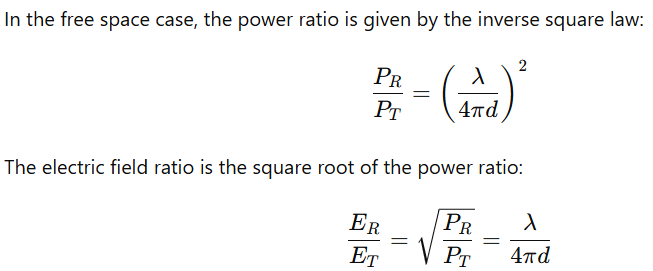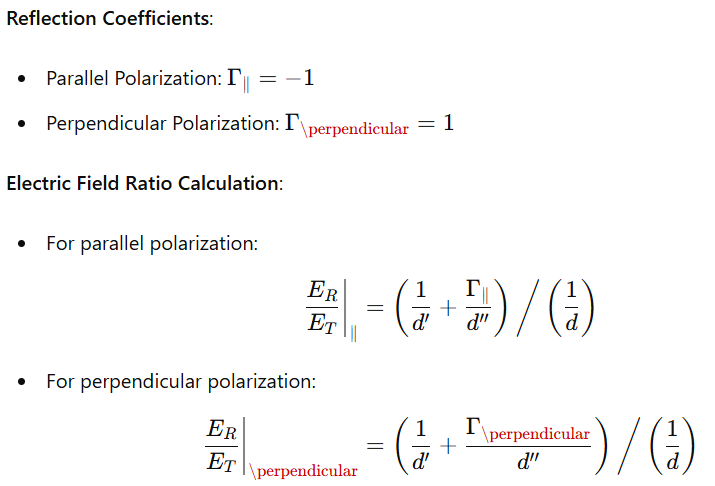(Solved): Lab Assignment 5: Reflection Antenna height at transmitter is 10 m. Antenna height at receiver is ...
Lab Assignment 5: Reflection Antenna height at transmitter is 10 m. Antenna height at receiver is 3 m. d = (0.1 : 0.3 : 10 km) Frequency =100 * YourID# • Check the lecture notes for direct and reflected distances. • Write a MATLAB code to plot the ratio of ER to ET as a function of d. In the free space case, the power ratio is given by the inverse square law:
(P_(R))/(P_(T))=((\lambda )/(4\pi d))^(2)The electric field ratio is the square root of the power ratio:
(E_(R))/(E_(T))=\sqrt((P_(R))/(P_(T)))=(\lambda )/(4\pi d)• Reflection Coefficients: Parallel Polarization:
\Gamma _(||)=-1Perpendicular Polarization:
\Gamma _(()/()"perpendicular)=1Electric Field Ratio Calculation: For parallel polarization:
(E_(R))/(E_(T))|_(||)=((1)/(d^('))+(\Gamma _(||))/(d^('')))/((1)/(d))For perpendicular polarization:
(E_(R))/(E_(T))|_(()/()"perpendicular)=((1)/(d^('))+(Gamma_(()/()" perpendicular ))/(d^('')))/((1)/(d))Use the command “abs” to take the magnitude of the above parallel and perpendicular polarization ratios. • Plot three subplots in one figure: magnitude of parallel, perpendicular, and the general free space against distance. • Use log-log scale for all the plots.

